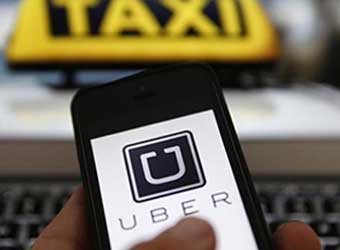
Uber restarts surge pricing in NCR, Bengaluru

 Cab aggregator Uber has restarted surge pricing in the National Capital Region (NCR) and Bengaluru, its largest markets in the country.
Cab aggregator Uber has restarted surge pricing in the National Capital Region (NCR) and Bengaluru, its largest markets in the country.
In the NCR, a surge pricing of 1.3x to 1.4x was noticed by Techcircle on Monday evening after almost three months of flat pricing. A quick follow up with other Delhi-based commuters and Uber officials validated what we had noticed - surge pricing is back.
Uber, run by San Francisco headquartered Uber Technologies Inc, had stopped dynamic pricing in NCR from June to August after the Delhi High Court set August 22 as the deadline after which taxi aggregators could not charge passengers more than the government-fixed rates.

Surge pricing refers to an increased fare, typically a multiple of the base fare, that comes into effect during peak hours. Taxi aggregators resort to surge pricing to bring more cars on roads when demand exceeds supply. The surge pricing is meat to tempt drivers who get to pocket more money from commuters in high demand areas like office zones and malls.
The August 22 deadline was fixed after Uber requested the court that it would need at least 10 days to bring changes in its software. Updating the software would help it ensure that passengers were not charged more than the stipulated rates, Uber had said.
"The surge pricing is in line with the rates fixed by the government. We are complying with the rules," a spokesperson of Uber told Techcircle when asked about the new pricing.

What does complying with rules means?
According to the rates notified by the government, the tariff for a non-AC black-yellow taxi is Rs 14 per km; for an AC black-yellow cab, it is Rs 16 per km and for an economy radio taxi tariff is Rs 12.50 per km. An economy radio taxi refers to cabs driven by chauffeurs who have badges issued by the transport department, along with licenses from the government and are backed by a 24x7 call centre and GPS that can track the cab. Night charges (between 11pm and 5am) are set at 25% over and above the basic fare.
These notified rates, however, are higher than the fares charged by taxi aggregators. For example, Uber Go, the AC hatchback service of Uber, which competes directly with the economy radio taxis, has a rate of Rs 6 per kilometer and a base fare of Rs40 in Delhi.

What this means is that Uber has ample legroom to jack up its tariff by as much as 2x, without ever going against the stipulated rates. So, while Uber may not be able to have a surge pricing of 3.5x or 4x anymore, commuters may still have to deal with higher fares.
Uber has, however, not yet started surge pricing in Mumbai.
Uber currently has 400,000 drivers on the platform. It is also planning to lease nearly 200,000 passenger vehicles over the next two years to add more drivers. India is an important market for Uber, whose services are available in over 66 countries across 507 cities. Uber mainly competes with ANI Technologies Pvt. Ltd, which operates Ola, in India.

Like this report? Sign up for our daily newsletter to get our top reports.
